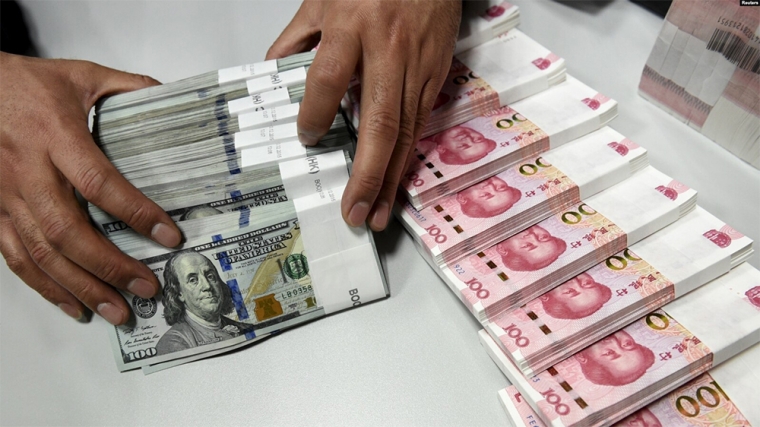
By Stuart Talman, XE currency strategist

Net moves were modest through Friday in the absence of any tier 1 macroeconomic data, whilst risk sensitive assets earned a reprieve as yields on US government bonds eased.
Peaking just shy of 4.33% last week, the yield on the benchmark 10-year bond is setting up to pierce through the cycle peak to mark fresh 16-year highs. Equity markets typically struggle in a rising yield environment, particularly long duration tech stocks. Should the 10-yr yield extend higher through 4.50%, a pronounced wave of selling is the likely outcome, driving US stocks and risk sensitive currencies lower.
In addition to rising global yields, intensifying concerns regarding a China credit event also contributes to deteriorating risk sentiment. More negative newsflow was received through Friday's Asian session - China's embattled property and financial sectors at risk of implosion as large players in each sector teeter on the brink of destruction.
The yuan's slide against the dollar continued last week, USDCNY peaking through the psychologically important 7.30 mark before pulling back to end the week below 7.28. On Friday, the Chinese authorities set the CNY daily fixing at its widest gap to the Bloomberg polled average since polling commenced in 2018.
The last time USDCNY traded through 7.30 - late October 2022. At that time the S&P500 was ~20% below current levels whilst the New Zealand dollar was rebounding from its cycle low near 55 US cents, approaching 0.58.
A fifth consecutive week of losses has seen the Kiwi crunched close to 8%, plummeting from north of 64 US cents to last week's low (and fresh year-to-date low) a few pips above 59 US cents.
Whilst technical momentum indicators have lurched well into over-sold territory, the breakdown can extend further should China contagion fears intensify whilst US treasury yields mark new cycle highs.
In addition, selling momentum within US equity markets could quicken as investors that participated in the first half rally crystallise profitable positions, whilst those late to the party acknowledge their tardiness, exiting recently established positions.
Falling -2.11% for the week, the S&P500 logged its third week of declines - only the second time this year the broader index has logged a 3-week losing streak. Falling -2.59%, it was the first time this year the Nasdaq has logged a hattrick of weekly losses.
Somewhat surprisingly, it has been a very orderly retreat from the July highs, the Nasdaq's intraday declines barley exceeding 1% over the past couple of weeks. You can be sure that the velocity of intraday losses will accelerate should yields continue to march higher.
A more aggressive wave of equity market de-risking would extend the Kiwi's steep downtrend, perhaps opening a path for NZDUSD to re-test the October low near 0.55.

Falling -1.46% for the week, the Kiwi's run of 5 week-on-week losses is its longest losing streak since August/September, sliding for 7 consecutive weeks during this period.
Twelve months ago at the Jackson Hole Symposium, Fed Reserve Chair Jerome Powell delivered his ultra hawkish speech, pronouncing the Fed would continue to aggressively raise the target rate, resulting in "pain" for US households and the broader economy.
Given the mature stage of the tightening cycle, the message will be different at this week's meeting of central bankers, finance ministers, academics, bankers and CEOs. Powell (scheduled to speak on FRI.) is likely to follow the rhetoric of the past few weeks – the target rate will be held higher for longer and further hikes may be required.
A relatively quiet macroeconomic calendar delivers a PBoC rate decision (today), local retail sales, flash PMIs and CPI for Tokyo.
Following last week's 15bps cut to the one-year medium-term lending facility (MLF), the PBoC is widely expected to follow up with similar sized cut to the one and five-year loan prima rates (LPR). The path of the yuan likely dictates the path of the China-sensitive Kiwi and Aussie dollars through Monday.
What NZD levels have we got our eye on to start the week?
The Kiwi mostly ranged traded between 0.5920 and 0.5960 through the final two days of last week following the 0.5903 year-to-date low printing during Thursday's local session.
The week's low almost perfectly aligned with the 61.8% Fibonacci retracement of the October February rally, located at 0.5904. This is our key-downside level.
On the topside, our attention is on the 0.6000/20 zone. A topside break through here would see NZDUSD pierce the downtrend resistance line that has capped the Kiwi's feeble rebounds on several occasions over the past five weeks. Should last week's low hold, the 23.6% Fib level (14 JUL. to 17 AUG. breakdown) presents at 0.6023.
We'd need to see price action clear this zone with conviction to raise the confidence levels regarding a Kiwi basing call.
Two other levels to monitor this week: 4.50% and 7.30.
The former being the yield on the US 10-year bond, the latter being the dollar versus the yuan. Should the 10-yr yield close in on 4.50% whilst USDCNY finds a foothold above 7.30, you can bet US equities the New Zealand dollar and other risk sensitive assets experience a bruising week.
Daily exchange rates
Select chart tabs
Stuart Talman is Director of Sales at XE. You can contact him here.

We welcome your comments below. If you are not already registered, please register to comment.
Remember we welcome robust, respectful and insightful debate. We don't welcome abusive or defamatory comments and will de-register those repeatedly making such comments. Our current comment policy is here.